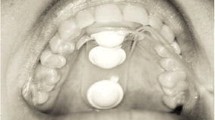Abstract
We examined the influence of rheological/textural properties and volumes of test foods on the sensory and motor aspects of swallowing in healthy young adults. Three test foods differing in thickening agent concentration (0.0, 1.5, and 3.0%) were prepared and delivered in different volumes (~3, ~5, and ~7 ml) to subjects seated on a chair. Viscosity analyses of the 1.5 and 3.0% test foods revealed that they behaved as non-Newtonian fluids and were thixotropic. The 1.5% test food differed from the 3.0% test food in its textural properties (hardness, cohesiveness, and adhesiveness). As determined by a linear model equation method, the thickening agent concentration affected the scores of all six sensory evaluation questions that were answered by the subjects, which suggests that the concentration affected the food properties being evaluated. Consistent with previous reports, thickening agent concentration and test food volume also affected some durational parameters of laryngeal (recorded by a piezoelectric sensor) and suprahyoid muscle (recorded on an electromyogram) motor activity. However, thickening agent concentration and test food volume did not affect the single amplitude parameter of the electromyogram that was measured. The thixotropic property of foods can affect the motor aspect of oropharyngeal swallowing as well as the sensory aspect.





Similar content being viewed by others
References
Dantas RO, Dodds WJ. Effect of bolus volume and consistency on swallow-induced submental and infrahyoid electromyographic activity. Braz J Med Biol Res. 1990;23:37–44.
Dantas RO, Dodds WJ, Massey BT, Kern MK. The effect of high- vs low-density barium preparations on the quantitative features of swallowing. AJR Am J Roentgenol. 1989;153:1191–5.
Dantas RO, Kern MK, Massey BT, Dodds WJ, Kahrilas PJ, Brasseur JG, et al. Effect of swallowed bolus variables on oral and pharyngeal phases of swallowing. Am J Physiol. 1990;258:G675–81.
Ertekin C, Aydogdu I, Yuceyar N, Pehlivan M, Ertas M, Uludag B, et al. Effects of bolus volume on oropharyngeal swallowing: an electrophysiologic study in man. Am J Gastroenterol. 1997;92:2049–53.
Reimers-Neils L, Logemann J, Larson C. Viscosity effects on EMG activity in normal swallow. Dysphagia. 1994;9:101–6.
Bisch EM, Logemann JA, Rademaker AW, Kahrilas PJ, Lazarus CL. Pharyngeal effects of bolus volume, viscosity, and temperature in patients with dysphagia resulting from neurologic impairment and in normal subjects. J Speech Hear Res. 1994;37:1041–59.
Bourne MC. Food texture and viscosity: concept and measurement. 2nd ed. San Diego, CA: Academic Press; 2002.
Stone H, Oliver S. Effect of viscosity on the detection of relative sweetness intensity of sucrose solutions. J Food Sci. 1966;31:129–34.
Szczesniak AS, Farkas E. Objective characterization of the mouthfeel of the gum solutions. J Food Sci. 1962;27:381–5.
Dewar RJ, Joyce MJ. The thixotropic and rheopectic behaviour of maize starch and maltodextrin thickeners used in dysphagia therapy. Carbohydrate Polymers. 2006;65:296–305.
Ertekin C, Pehlivan M, Aydogdu I, Ertas M, Uludag B, Celebi G, et al. An electrophysiological investigation of deglutition in man. Muscle Nerve. 1995;18:1177–86.
Grafen A, Hails R. Modern statistics for the life sciences. Oxford, UK: Oxford University Press; 2002.
Logemann JA. Evaluation and treatment of swallowing disorders. 2nd ed. Austin, TX: Pro-Ed; 1998.
Acknowledgments
We are grateful to Dr. Masako Fujiu-Kurachi (Department of Eating Disorders and Dysphagia Rehabilitation, University of Niigata Rehabilitation Graduate School) for her kind help in preparing the manuscript. This study was supported in part by Grants-in-Aid for Scientific Research from the Ministry of Education, Science and Culture of Japan (No. 19592233 to AI and No. 19500667 to YM) and from Niigata University of Health and Welfare (to YM).
Author information
Authors and Affiliations
Corresponding author
Rights and permissions
About this article
Cite this article
Igarashi, A., Kawasaki, M., Nomura, Si. et al. Sensory and Motor Responses of Normal Young Adults During Swallowing of Foods with Different Properties and Volumes. Dysphagia 25, 198–206 (2010). https://doi.org/10.1007/s00455-009-9243-y
Received:
Accepted:
Published:
Issue Date:
DOI: https://doi.org/10.1007/s00455-009-9243-y




